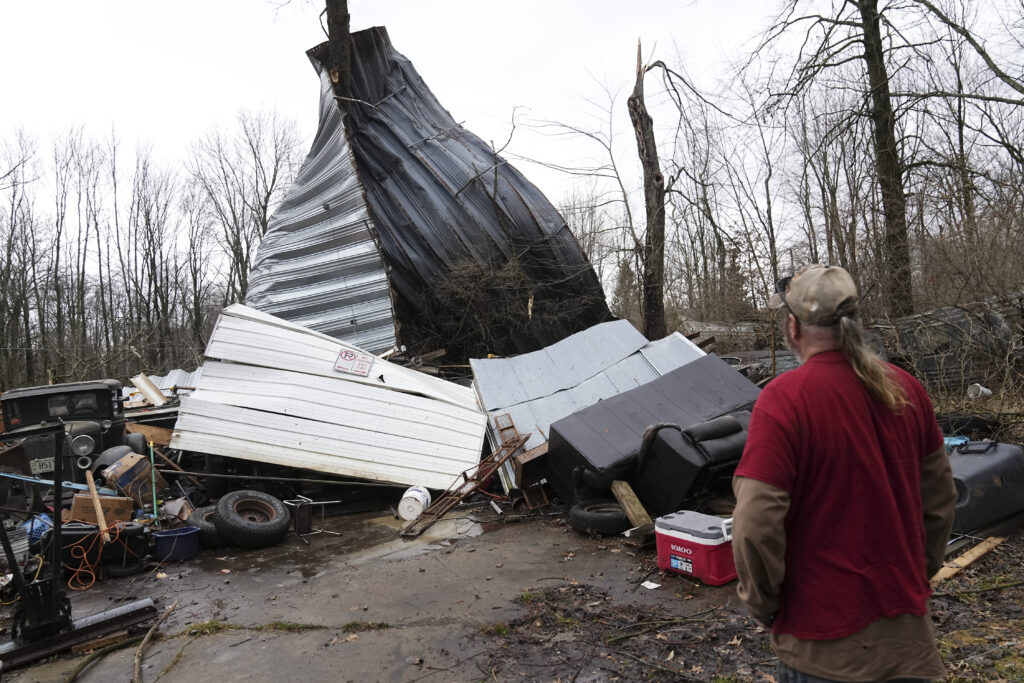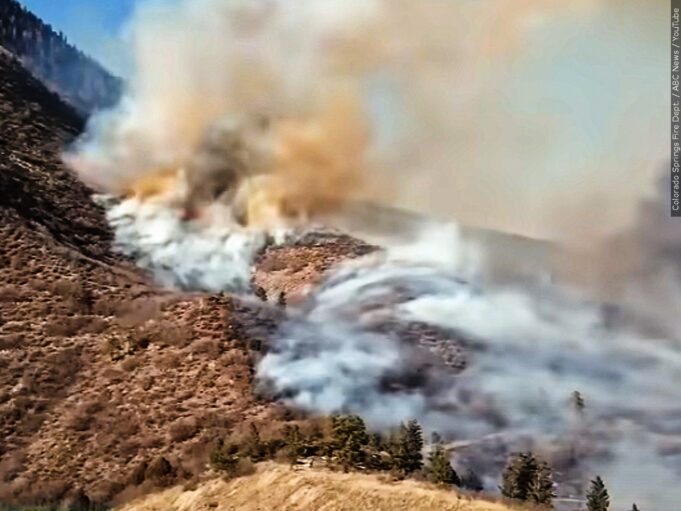CANADIAN, Texas—A cluster of wildfires scorched the Texas Panhandle on Feb. 28, including a blaze that grew into one of the largest in state history, as flames moved with alarming speed and blackened the landscape across a vast stretch of small towns and cattle ranches.
Authorities warned that the damage to communities on the high plains could be extensive.
Known as the Smokehouse Creek Fire, the largest blaze expanded to more than 1,300 square miles and jumped into parts of neighboring Oklahoma. It is now larger than the state of Rhode Island, and the Texas A&M Forest Service said the flames were only about three percent contained.
“I believe the fire will grow before it gets fully contained,” said Nim Kidd, chief of the Texas Division of Emergency Management.
The largest fire recorded in state history was the 2006 East Amarillo Complex fire, which burned about 1,400 square miles and resulted in 13 deaths.
Hemphill County Emergency Management Coordinator Bill Kendall described the charred terrain as being “like a moonscape. … It’s just all gone.”
Mr. Kendall said about 40 homes were burned around the perimeter of the town of Canadian, but no buildings were lost inside the community. Mr. Kendall also said he saw “hundreds of cattle just dead, laying in the fields.”
The people in that area are probably not “prepared for what they’re going to see if they pull into town,” Hutchinson County Emergency Management spokesperson Deidra Thomas said in a social media livestream. She compared the damage to a tornado.
Authorities have not said what ignited the fires, but strong winds, dry grass and unseasonably warm temperatures fed the blazes. Near Borger, a community of about 13,000 people, emergency officials at one point late Feb. 27 answered questions from panicked residents on Facebook and told them to get ready to leave if they had not already.
Republican Gov. Greg Abbott issued a disaster declaration for 60 counties. The encroaching flames caused the main facility that disassembles America’s nuclear arsenal to pause operations Tuesday night, but it was open for normal work on Feb. 28.

Sustained winds of up to 45 mph, with gusts of up to 70 mph, caused the fires that were spreading east to turn south, threatening new areas, forecasters said. But winds calmed down after a cold front came through the evening of Feb. 27, said Peter Vanden Bosch, a meteorologist at the National Weather Service in Amarillo.
The Pantex nuclear weapon plant, northeast of Amarillo, evacuated nonessential staff Feb. 27 night out of an “abundance of caution,” said Laef Pendergraft, a spokesperson for the National Nuclear Security Administration’s production office at Pantex. Firefighters remained in case of an emergency.
Pantex tweeted early Feb. 28 that the facility “is open for normal day shift operations” and that all personnel were to report for duty according to their assigned schedule.
As the fires raged Feb. 27, evacuations were ordered in several towns in a swath northeast of Amarillo.
The Smokehouse Creek Fire spread from Texas into neighboring Roger Mills County in western Oklahoma, where officials encouraged people in the Durham area to flee. Officials did not know yet how large the fire was in Oklahoma.
Severe storms that appear to have spawned a rare February tornado outbreak sent sleeping Midwesterners scrambling for safety and left a trail of damage and power outages across four Great Lakes states, including the Chicago suburbs, ending a spell of summerlike, sometimes record temperatures.
At least nine confirmed or suspected tornadoes in Illinois, Indiana, Michigan and Ohio littered roads with fallen trees and branches, shredded homes and barns, and scattered debris across city and countryside alike. No injuries were reported, despite the storm’s timing at night.
At least five other storms in Ohio were confirmed as tornadoes—in Montgomery and Greene counties in southwestern Ohio; east of Columbus in Franklin and Licking counties; in Hilliard in Franklin County; east of London in Madison County and ending just south of West Jefferson; and near Springfield in Clark County. The latter was rated at EF-2 strength.
The storms followed unusual warmth across much of the region in recent days. They were followed Feb. 28 by a return to winter weather, with snow and temperatures in the 20s in some areas.
Weather service teams throughout the region were trying to confirm tornado reports. One suspected tornado traveled across Chicago’s southern suburbs—from Calumet City, Illinois, into East Chicago and Gary in northwestern Indiana—before heading out over Lake Michigan as a waterspout, weather service meteorologist Kevin Doom said.
The Grand Blanc Township tornado is only the second February tornado for the section of Michigan covered by Detroit’s National Weather Service office since recordkeeping began in 1950, following one in Wayne County on Feb. 28, 1974, the service said.
The warm weather and severe storms, including hail up to an inch in diameter, on Feb. 27 and Feb. 28 are unusual for the area this time of the year, said meteorologist Dave Kook of the weather service’s Detroit office. (Compiled by Associated Press reports.)













